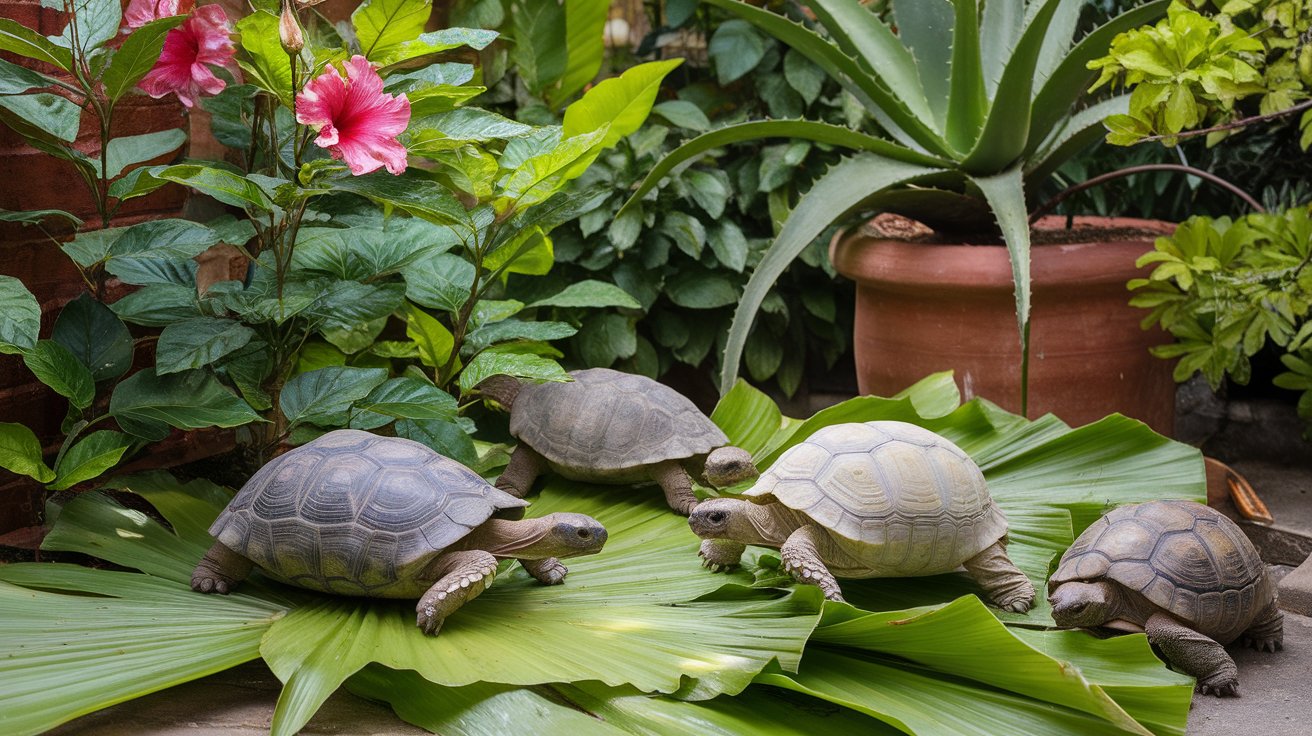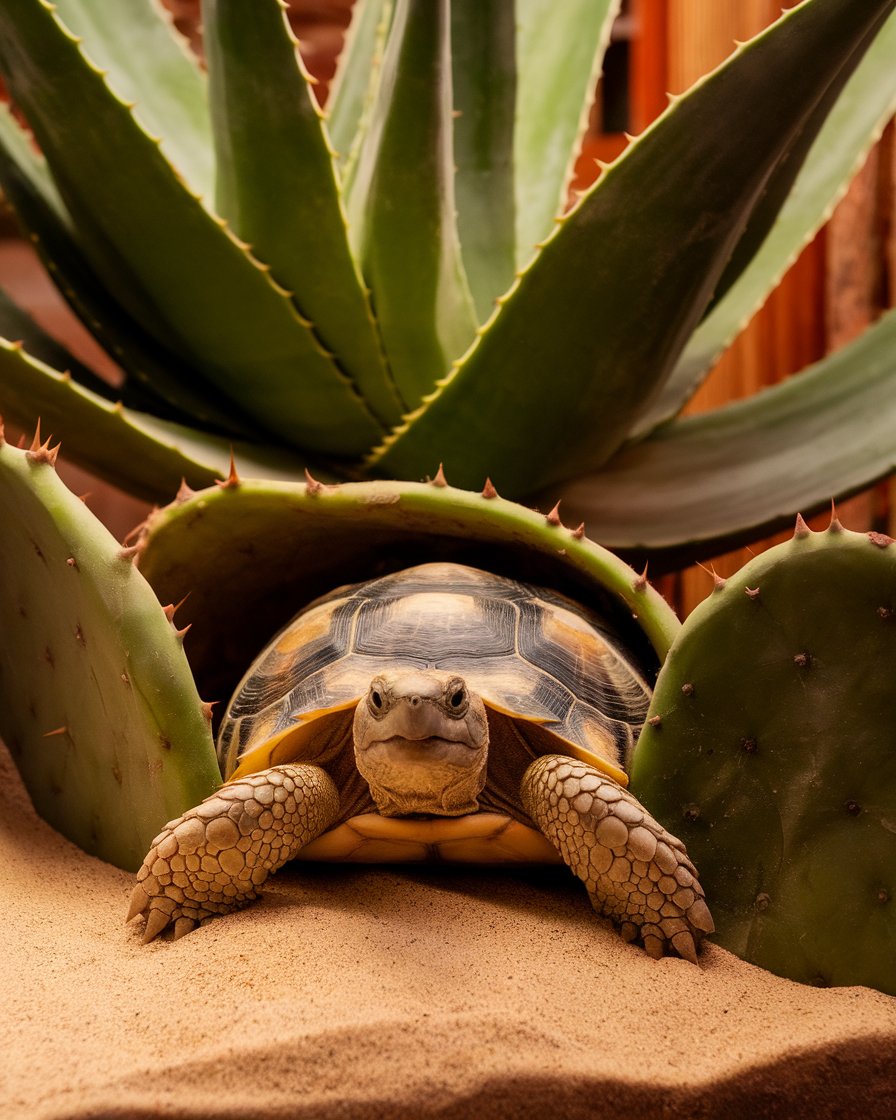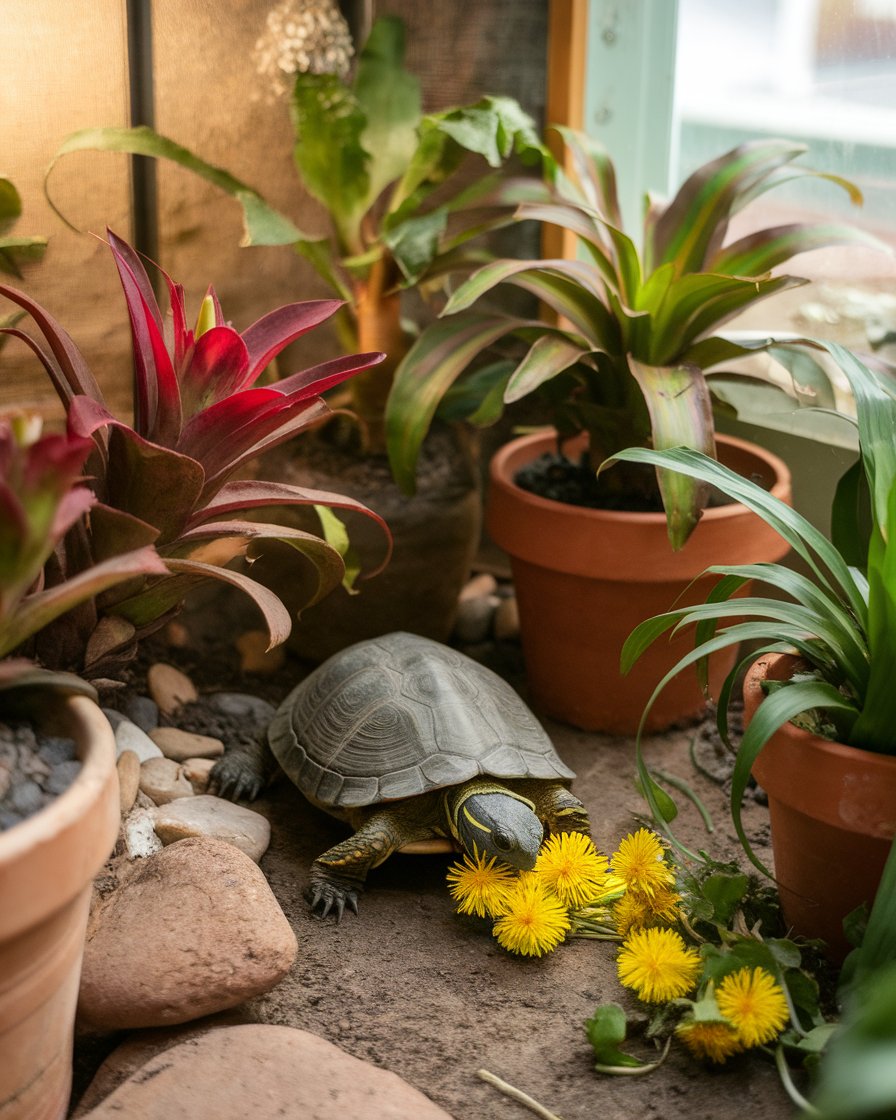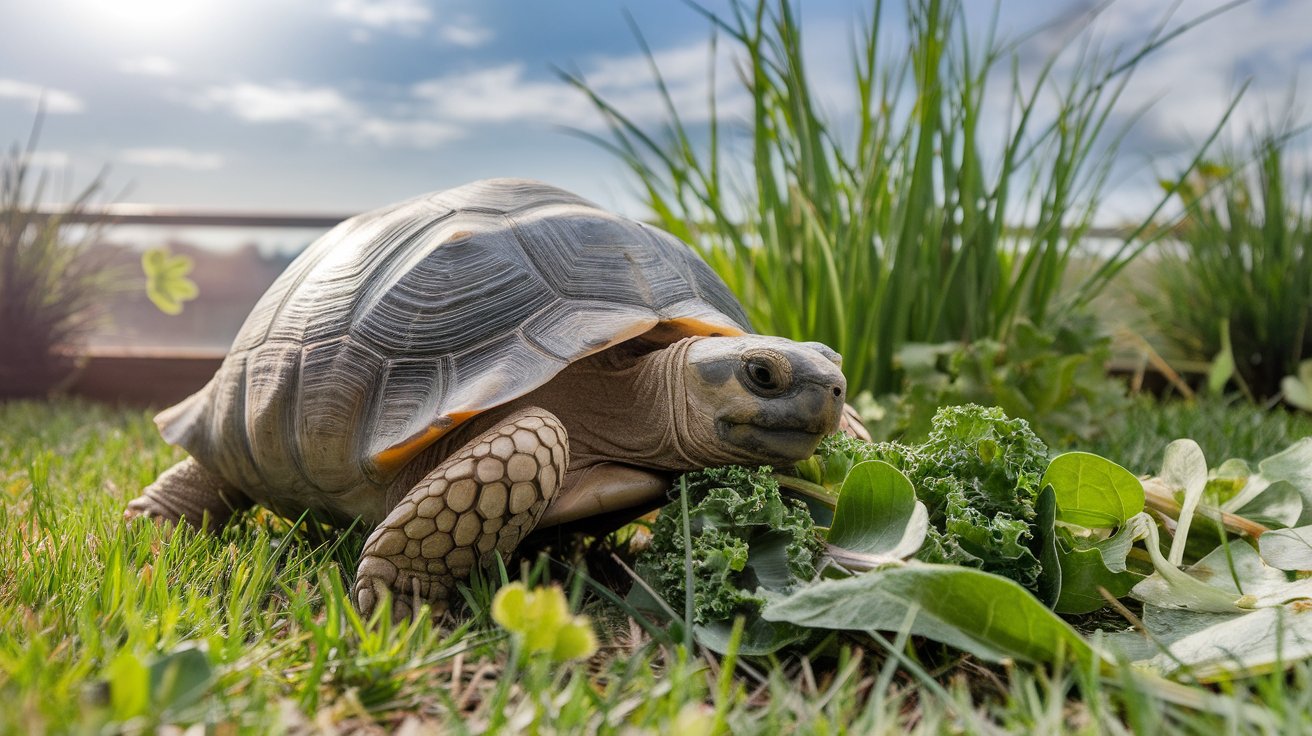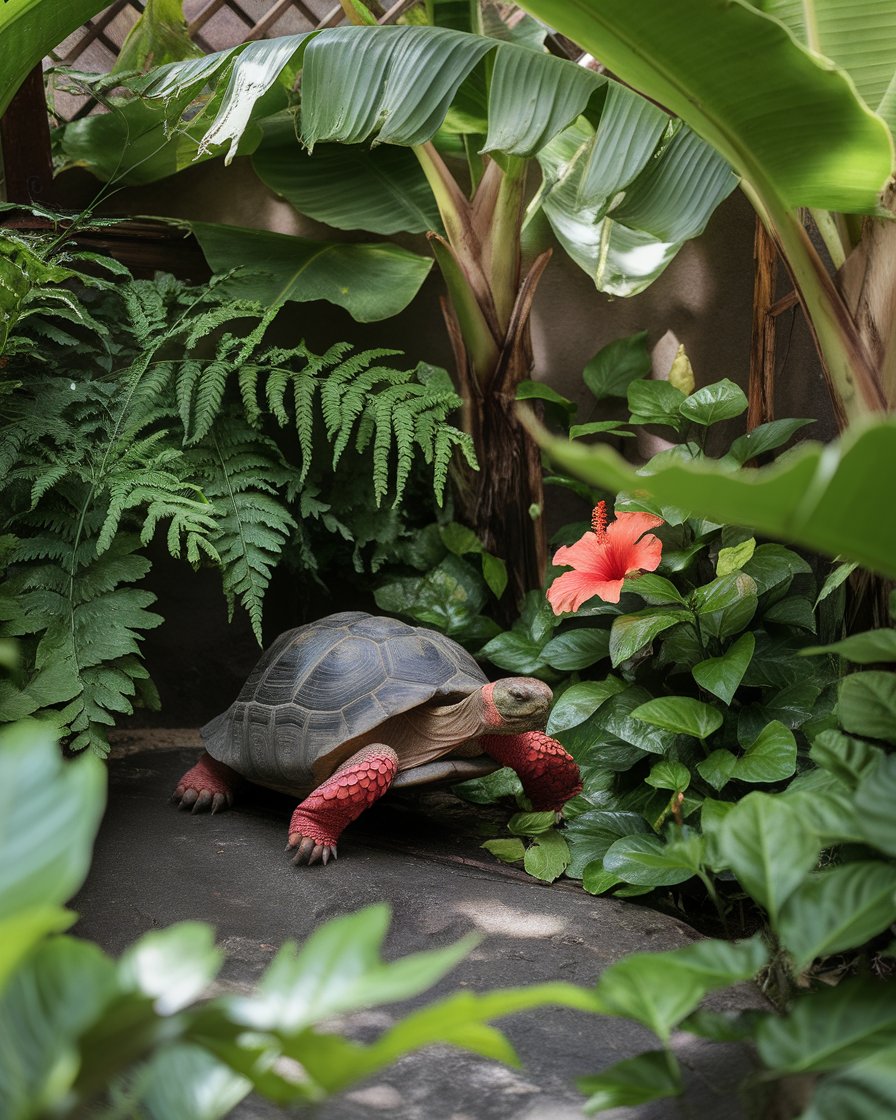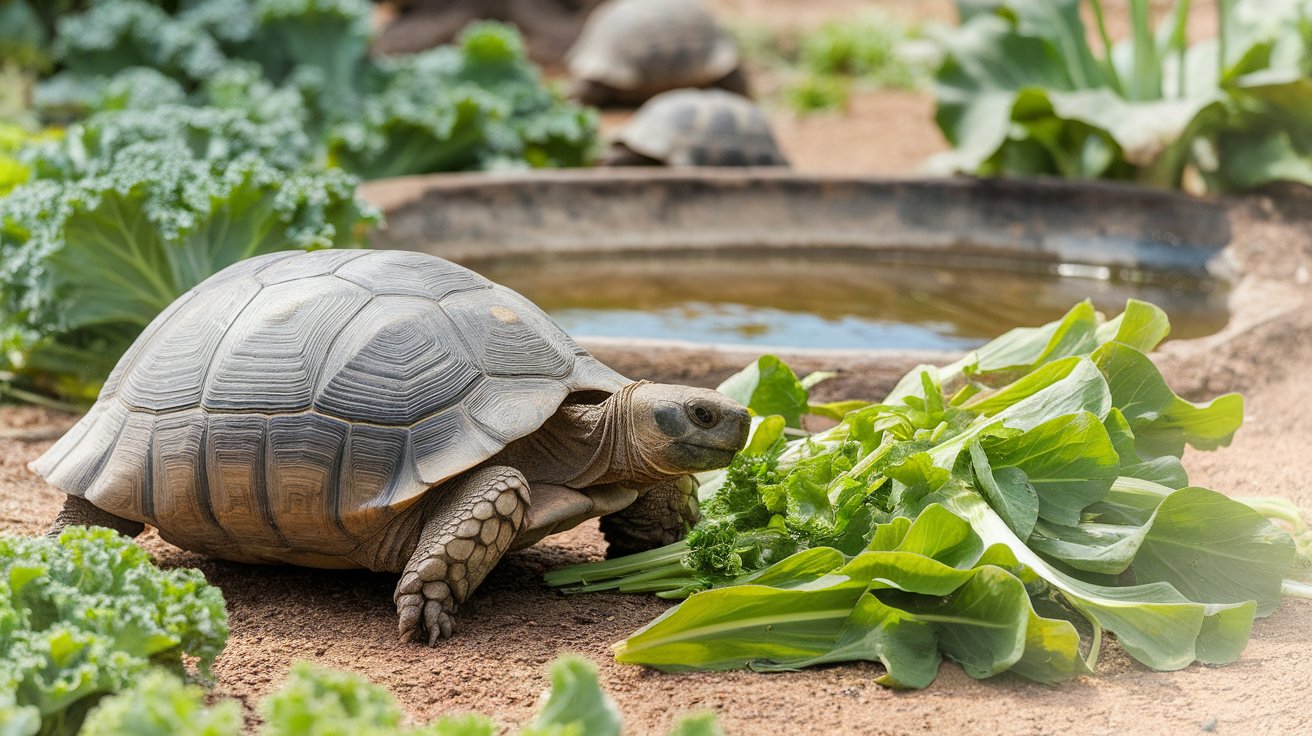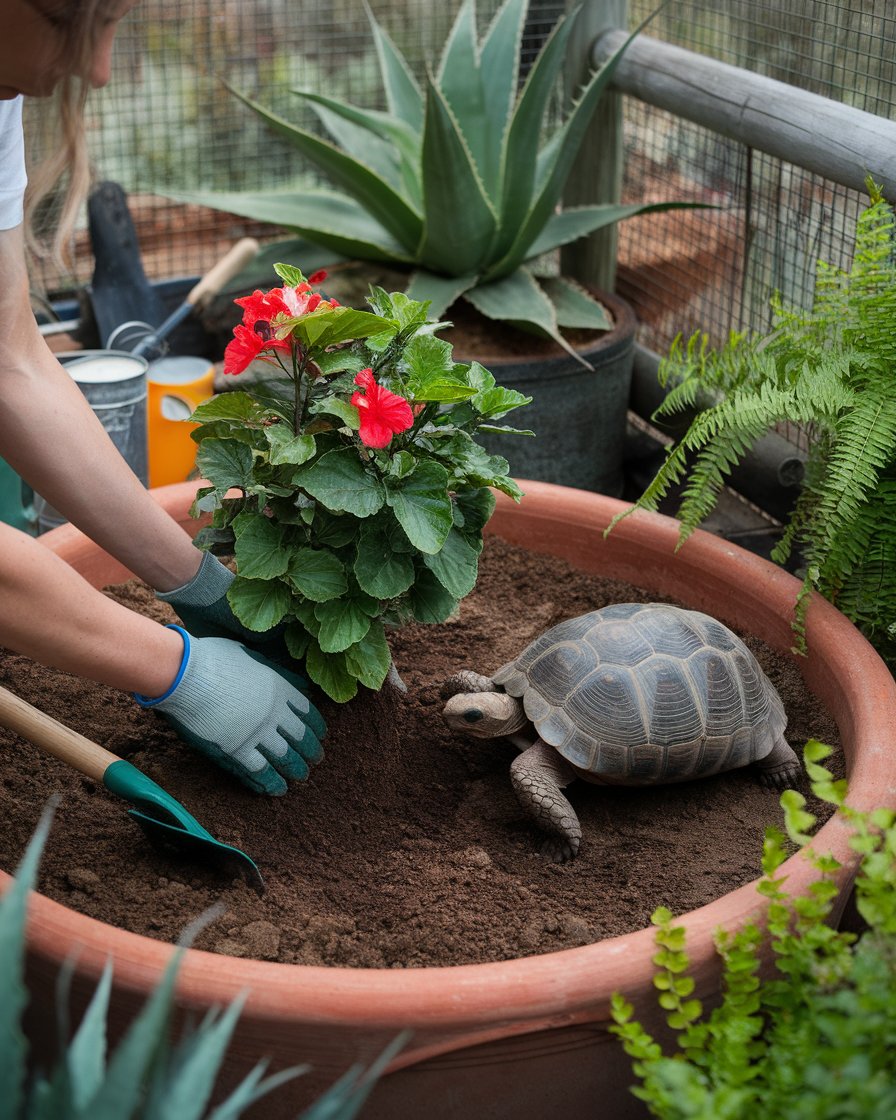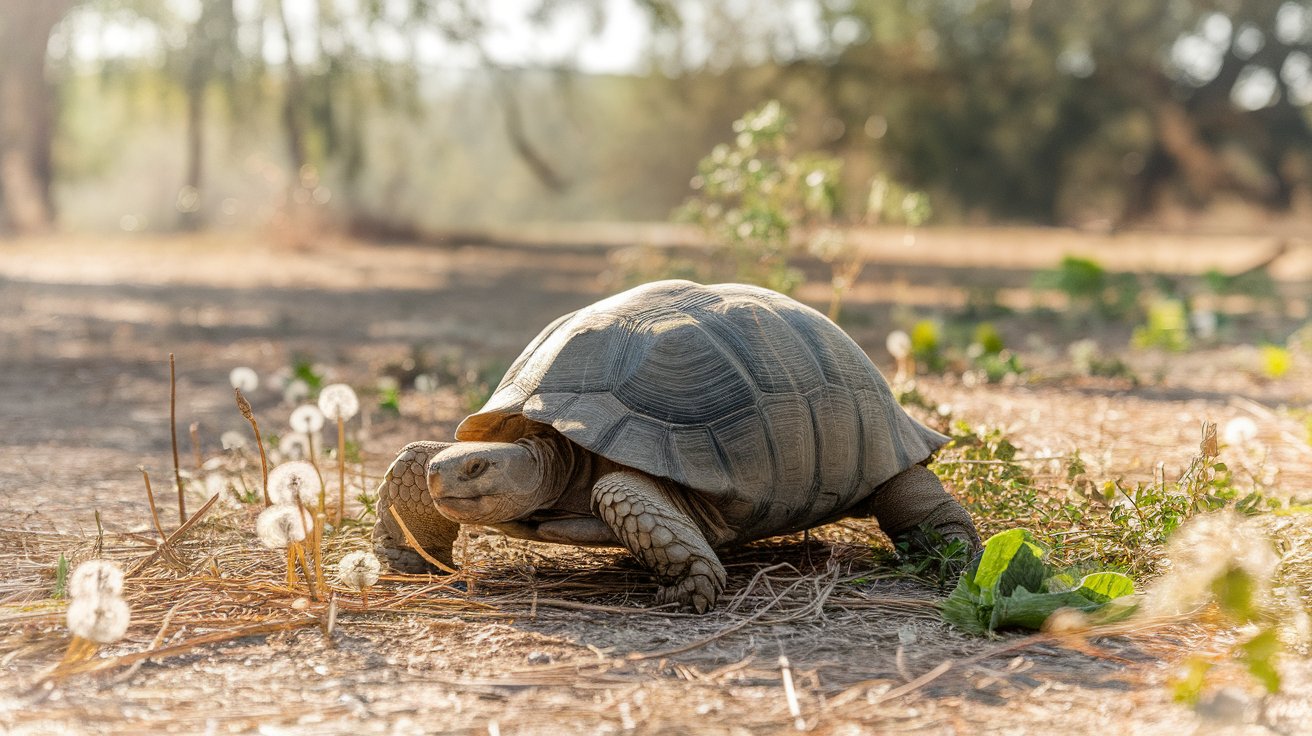Introduction
When it comes to caring for tortoises, selecting tortoise safe plants is vital for their health and happiness. Many tortoise owners prefer to plant a variety of good plants that not only beautify the enclosure but also offer nutritious options for their pets. Certain species, like the redfoot tortoise, thrive when provided with a natural environment that mimics their wild habitat. Incorporating different plants, such as tropical hibiscus or yellow flowers, can help create a more engaging and healthy living space. These plants can serve as both food sources and shelter, allowing tortoises to feel more at home in their tank.
It’s important to avoid harmful options and focus on safe, edible plants that tortoises can enjoy without risk. Some plants, like carex or shrubs, are great additions to a yard or enclosure, offering both nutritional benefits and a place to explore. Regularly adding fresh cutting of whole plants encourages tortoises to forage, mimicking their natural behaviors.
Key Takeaways
- Choosing tortoise-safe plants is crucial for providing a natural, nutritious, and safe environment for Russian tortoises.
- Spineless Prickly Pear and Aloe are excellent, low-maintenance plant options that offer hydration and nutrition to Russian tortoises.
- Echeveria and Rhipsalis add both beauty and diversity to tortoise enclosures, enhancing the habitat and providing edible options.
- Red Foot tortoises thrive in enclosures that mimic their humid, tropical habitat, with safe and edible plants like hibiscus and Boston fern.
- Incorporating banana plants and hostas creates a jungle-like setting for Red Foot tortoises, offering both aesthetics and nutrition.
- Edible plants provide both nutritional benefits and mental stimulation by encouraging natural foraging behavior in tortoises.
Safe Plants for Russian Tortoises
Choosing safe plants for Russian tortoises is essential for their health and well-being. These tortoises, known for their hardy nature, benefit from a variety of plants that provide both nourishment and enrichment to their environment. Many reptile keepers prefer plants that are safe to eat and contribute to a varied diet, ensuring the tortoises receive proper nutrition. Spineless cacti, succulents, and other low-maintenance plants are particularly useful, as they mimic the tortoise’s natural desert habitat. Creating a safe and edible garden in your tortoise’s enclosure can not only improve its overall health but also make the habitat more visually appealing. Always avoid plants that contain chemicals or pesticides, as these can be harmful to the tortoises.
Best Edible Plants for Your Tortoise Enclosure
1. Spineless Prickly Pear for Hydration and Nutrition
The Spineless Prickly Pear is a top choice for tortoises due to its rich moisture content and edible pads. This cactus species offers a safe and nutritious option for tortoises, especially those from arid regions like Russian tortoises. Not only does it mimic their natural desert diet, but it also helps in hydration. The absence of sharp spines ensures that the tortoises can safely nibble on the pads without risk. Regular consumption of this plant provides them with necessary fiber, making it an ideal staple in their diet.
2. Aloe for Indoor Enclosures
Aloe is a hardy succulent that thrives in indoor enclosures, offering tortoises a safe and edible option year-round. Known for its soothing properties, aloe is not only non-toxic but also provides tortoises with additional moisture and nutrients. It requires minimal care and grows well in pots, making it a perfect addition to both indoor and outdoor setups. Its ability to store water in its fleshy leaves ensures that it stays hydrated, offering a natural source of water for tortoises that might not drink often.
3. Echeveria for Aesthetic and Dietary Benefits
Echeveria is a succulent with thick, rosette-shaped leaves that adds both aesthetic beauty and nutritional value to tortoise enclosures. These plants are safe for tortoises to eat and are easy to maintain, making them an excellent choice for any tortoise keeper. Echeveria’s vibrant appearance adds visual appeal to the habitat while providing a low-maintenance, nutrient-rich food source. The leaves are soft and palatable, encouraging foraging and helping to diversify the tortoise’s diet.
4. Hibiscus for Calcium-Rich Leaves and Flowers
Hibiscus plants offer a dual benefit of both beauty and nutrition for tortoises. The brightly colored flowers are entirely safe to eat and are rich in calcium, which is essential for strong bones and shell development. Hibiscus is particularly beneficial for tropical tortoises like the Red Foot tortoise, which thrive in warm, humid environments. These plants also enhance the appearance of the enclosure, making it more vibrant while providing tortoises with a source of essential vitamins and minerals.
5. Banana Plant for a Tropical Setting
Banana plants are another excellent option for creating a jungle-like environment in your tortoise’s enclosure. While tortoises can safely consume the leaves, the plant also provides natural shade and shelter, which is important for their comfort. The large leaves offer a cooling effect, particularly in warm enclosures, and contribute to a balanced diet. While the fruit itself can be a treat, the leaves are an excellent addition to a tortoise’s regular diet, providing both fiber and hydration.
6. Hostas for a Leafy, Edible Ground Cover
Hostas are an attractive, low-maintenance plant that works well as a ground cover in tortoise enclosures. Their broad leaves provide shade and are safe for tortoises to nibble on. Known for their lush, leafy appearance, hostas can create a natural foraging area that encourages tortoises to explore their habitat. These plants thrive in shaded, humid environments, making them perfect for tortoise enclosures that replicate tropical conditions. Adding hostas ensures that your tortoise has a diverse, edible environment that promotes both physical and mental enrichment.
Spineless Prickly Pear and Aloe
Spineless Prickly Pear and Aloe are two ideal plant choices for Russian tortoises. The Spineless Prickly Pear, which lacks the sharp spines found on typical cacti, offers a safe food source for tortoises. It’s rich in moisture, which can help hydrate them, especially in arid conditions. Aloe, on the other hand, is a succulent that thrives indoors and is safe for reptiles. It not only adds a tropical feel to the enclosure but also provides a constant supply of fresh leaves for tortoises to nibble on. Both plants are easy to cultivate and require little care, making them perfect for tortoise keepers.
Echeveria and Rhipsalis Options
Echeveria and Rhipsalis are also excellent choices for your tortoise’s habitat. Echeveria, a type of succulent, is visually striking with its thick, fleshy leaves forming beautiful rosettes. Safe to feed and easy to grow, it adds a vibrant element to any enclosure. Rhipsalis, a unique type of cactus, offers a different texture and appearance compared to traditional succulents. Its long, thin branches can add dimension to the habitat, allowing the tortoise to explore and forage. Both of these plants contribute to a varied diet and can thrive in both indoor and outdoor tortoise tables, making them versatile additions to your tortoise’s home.
Safe Plants for Red Foot Tortoises
Red Foot tortoises thrive in environments that mimic their natural habitat, so selecting safe and nutritious plants for their enclosures is essential. Many tortoise keepers opt for plants that are not only decorative but also edible, providing both sustenance and a natural aesthetic. These tortoises, hailing from tropical regions, benefit from plants that can grow in humid, warm conditions. Introducing safe, tortoise-friendly plants like hibiscus, ferns, and tropical species can ensure they have access to a varied diet that supports their health. Avoiding plants with harmful chemicals or pesticides is critical to their well-being. Additionally, offering plants that can be readily consumed helps create a balanced diet and an enriching environment for these pets.
Case Study: Implementing Hibiscus and Ferns in a Red Foot Tortoise Enclosure
In 2022, a tortoise keeper from Florida implemented a new planting strategy in their Red Foot tortoise enclosure by introducing hibiscus and Boston ferns. The goal was to replicate the tortoise’s natural tropical habitat while providing a variety of safe, edible plants. Hibiscus was chosen for its high calcium content and vibrant flowers, which added both aesthetic value and nutrition to the enclosure. The leaves and flowers were readily consumed by the tortoise, supporting healthy shell development. Boston ferns, thriving in the humid conditions of Florida, provided necessary shade and shelter, creating a naturalistic environment. This setup not only enriched the tortoise’s habitat but also reduced the reliance on commercial foods. The case demonstrated how adding specific plants can improve both the physical and mental well-being of Red Foot tortoises by encouraging natural behaviors like foraging and grazing in an environment that mimics their native habitat.
Hibiscus and Boston Fern
Hibiscus is a fantastic addition to any Red Foot tortoise enclosure. Its large, colorful blossoms bring a tropical feel, while the leaves and flowers are completely safe for the tortoise to consume. The hibiscus plant is known for its high calcium content, making it an ideal dietary option for tortoises, helping them maintain healthy bones and shells. Boston fern is another excellent plant for these enclosures. Its lush, green fronds thrive in the warm, humid environments that Red Foot tortoises love. Not only is it non-toxic, but it also enhances the enclosure’s appearance, providing shade and cover that tortoises appreciate while adding a touch of the rainforest to their surroundings.
Banana Plant and Hostas Recommendations
The banana plant is a perfect match for Red Foot tortoises due to its large, leafy structure that replicates the jungle-like conditions they enjoy. While the fruit is a treat, the leaves themselves can be safely consumed by the tortoises, making it a versatile plant for the enclosure. Hostas, known for their vibrant green foliage and broad leaves, are another safe choice for tortoise owners. These ornamental plants add visual appeal and offer a nutritious, leafy option that can be incorporated into the tortoise’s diet. By selecting these plants, you not only enhance the enclosure’s look but also contribute to the tortoise’s overall health and enjoyment.
Benefits of Adding Edible Plants to the Turtle Enclosure
Adding edible plants to a turtle enclosure brings numerous benefits, both in terms of the animal’s health and the enrichment of its habitat. Tortoises, particularly species like the Red Foot tortoise, thrive on a diet that includes fresh, safe plants. By growing these plants directly in their enclosure, you can ensure they receive a constant supply of fresh, nutritious food. Additionally, plants like hibiscus, dandelions, and tropical species provide essential vitamins and minerals, promoting healthy shell growth and overall well-being. Beyond nutrition, these plants enhance the aesthetic of the enclosure, making it more natural and visually appealing. Selecting the right tortoise-safe plants is key to avoiding any potential toxins and ensuring a balanced, healthy diet.
Nutritional Value for Tortoises
Edible plants are an excellent way to boost the nutritional intake of your tortoise. Many tortoise-safe plants, such as hibiscus and dandelions, are rich in calcium, which is essential for strong bones and shell development. These plants also provide other vital nutrients like fiber and vitamins A and C, which support overall health. For tortoises, a diet that includes a variety of fresh, leafy greens and flowers mimics their natural eating habits and ensures they maintain optimal health. Introducing these plants not only provides the nutrition they need but also reduces the reliance on commercial feeds. Keeping a steady supply of edible plants ensures your tortoise gets the essential nutrients it needs every day.
Enrichment and Foraging Opportunities
Beyond nutritional benefits, adding edible plants to the enclosure creates a stimulating environment for tortoises. Foraging is a natural behavior for them, and having plants available for grazing helps keep them mentally active. Tortoises enjoy the challenge of searching for and nibbling on leaves, flowers, and stems, which replicates how they would behave in the wild. This enrichment is critical for their overall well-being, helping to prevent boredom and stress, especially in indoor enclosures. Offering a variety of plants like bromeliads, violets, and grasses allows the tortoises to explore different textures and flavors, promoting both physical and mental health. A happy, enriched tortoise is a healthier, more active pet.
“Plants give us oxygen for the lungs and for the soul.” – Linda Solegato
Planting Techniques in Turtle Enclosures
Creating a balanced and enriching habitat for your tortoise involves careful consideration of planting techniques. The goal is to introduce tortoise-safe plants while protecting them from being trampled or overgrazed. By selecting the right plants and methods for your turtle enclosure, you can ensure that the habitat remains both practical and visually appealing. Using a variety of planting strategies will help maintain healthy foliage, which in turn supports a more natural environment for your tortoise. Not only will the right plants provide nutrition, but they also create shade, enhance aesthetics, and contribute to the tortoise’s overall well-being.
Using Terracotta Pots to Protect Plants
One effective technique for planting in tortoise enclosures is the use of terracotta pots. These pots offer a sturdy barrier that can prevent tortoises from trampling over delicate plants while allowing easy maintenance. By burying the pots several inches into the substrate, you ensure that the tortoise cannot easily knock them over, while also maintaining proper root growth for the plants. The use of terracotta helps keep moisture levels in check, preventing the soil from drying out too quickly. Plants such as tropical hibiscus or lemon balm can thrive in these conditions, adding both nutrition and aesthetic value to the enclosure. This technique creates a harmonious space where both plants and tortoises can coexist.
Proper Placement and Maintenance Tips
To ensure your tortoise enclosure stays vibrant and healthy, plant placement is key. Consider each plant’s light requirements, as well as the behavior of your tortoise. For indoor enclosures, it’s crucial to provide enough UVB light for both plant growth and tortoise health. Keeping an eye on substrate moisture levels is also essential to avoid overwatering or dry conditions, which could harm the plants. Regularly rotating plants or adjusting their placement can help balance the tortoise’s interaction with them, ensuring they do not become overgrazed or trampled. Maintaining a well-organized enclosure with thriving plants can enhance the quality of life for your tortoise, creating a visually appealing and functional environment.
Conclusion
In conclusion, selecting great plants that are both safe and beneficial for your tortoises plays a significant role in their health and well-being. By incorporating various plants for tortoises, such as hibiscus, banana plants, and succulents, you can create an environment that mimics their natural habitat and encourages natural behaviors like foraging. These flowers and leaves not only add beauty to their enclosures but also provide essential nutrients that can be a staple in their diet.
When choosing plants, it’s important to do a lot of research to ensure they are safe and non-toxic. Some plants, like those with large leaves or that thrive in warm climates, can offer shade and shelter, contributing to a balanced habitat. Regular care and adjustments, such as keeping an eye on moisture levels and ensuring plants aren’t tricky to maintain, can further enhance the enclosure, ensuring a happy, healthy tortoise.

